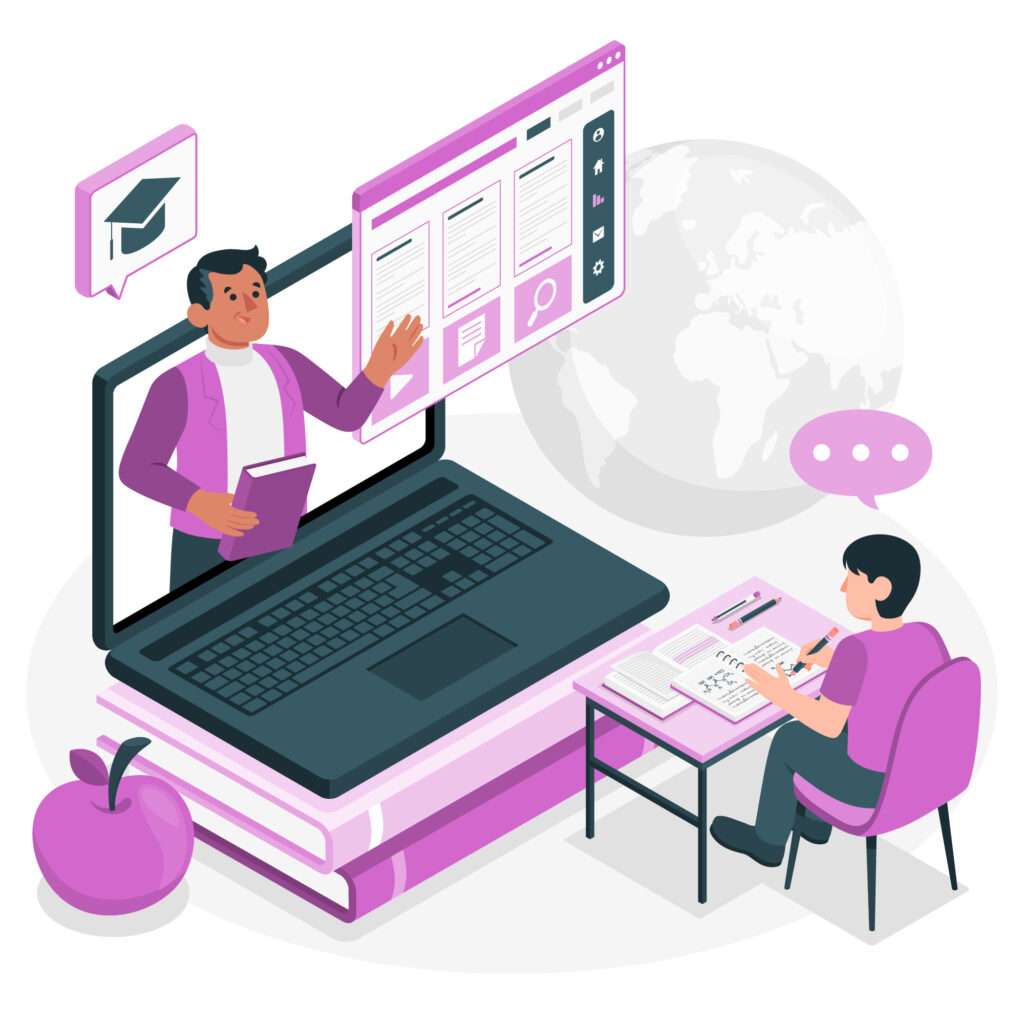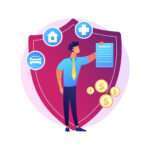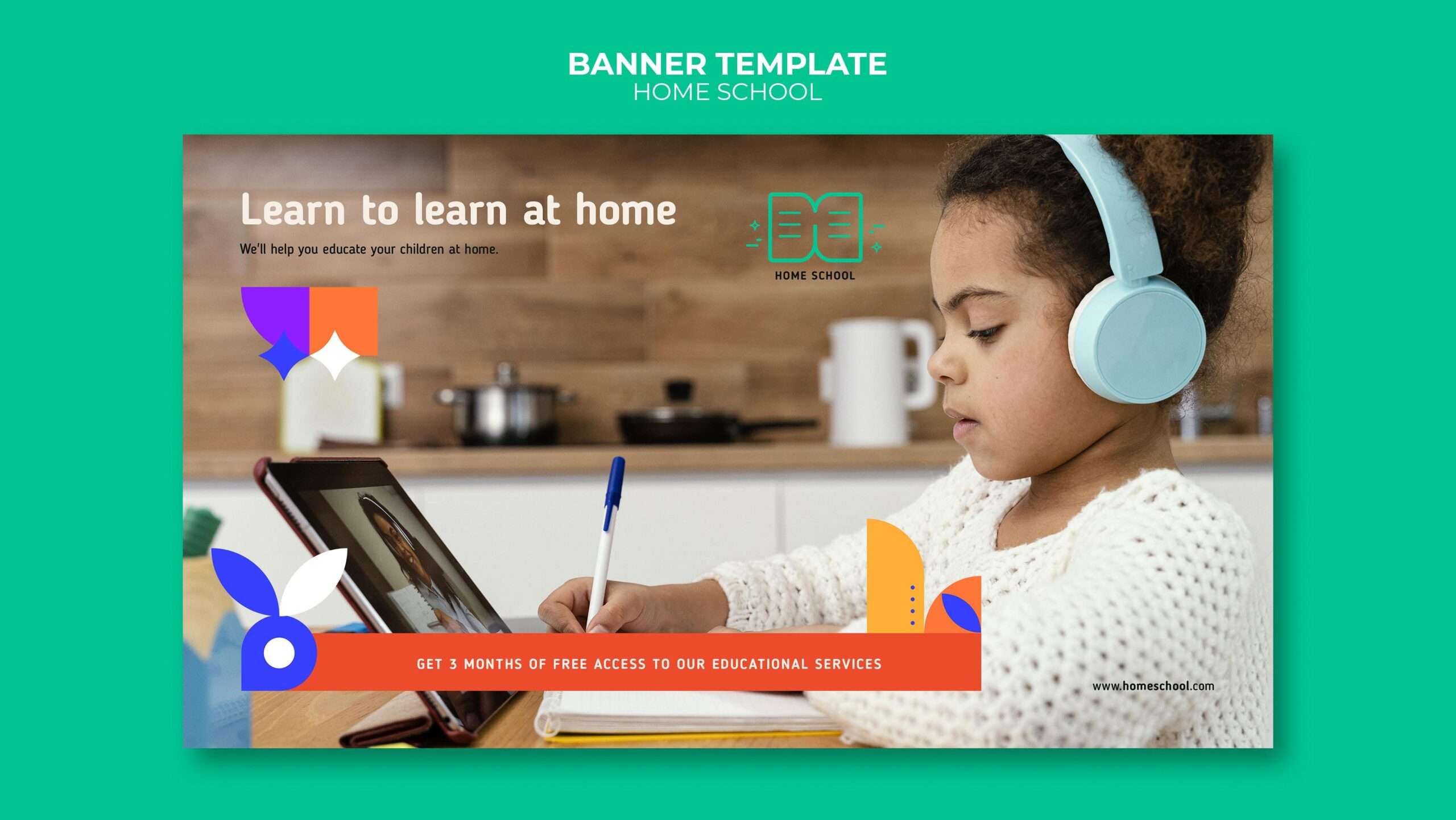Slug: online-vs-traditional-learning-styles-engagement
Introduction: The Canvas of Education That Changes All the Time
The way we learn has changed a lot, especially in the last ten years. What used to be mostly limited to physical classrooms has grown into a huge, borderless digital world. Today, whether you’re a high school graduate thinking about getting your first college degree, a professional in Kigali who wants to learn new skills for the demands of 2025, or just someone who loves learning and wants to know more about a new topic, you have to ask yourself, Which type of learning is better for you, online or traditional?
This isn’t just about convenience or access; it’s a big choice that will affect your success, happiness, and, in the end, your ability to learn new things. Understanding yourself as a learner, especially your own learning styles and how you like to be engaged, is very important for making the right choice. If you don’t know yourself well enough, you could end up in a format that doesn’t work with your natural abilities, which could lead to frustration, disengagement, and bad results.
As a top blogger who cares about helping people deal with the difficulties of modern education, I’m here to cut through the noise. This detailed guide will look at the differences between online and traditional learning environments and give you a strategic framework to help you make the best choice. We’ll look at the pros and cons of each option, talk about how important learning styles and engagement are, and give you useful tips for success no matter which path you choose. By the end of this trip, you’ll have a better idea of where to go with your education.
The Two Pillars: What Online and Traditional Learning Are
Before we get into the complicated comparison, let’s make sure we all know what each mode really means in today’s world.
Traditional Learning (In-Person/On-Campus): This is the way we’ve always learned. It means being in a classroom, lecture hall, or lab at certain times. Most of the time, students and teachers interact in person, which encourages quick feedback and a strong sense of community. Physical textbooks, printed handouts, and direct access to campus resources like libraries, labs, and student services are all common learning materials. The environment is organized, with set class times and a social ecosystem that is often more organized.
Online Learning (E-Learning/Virtual Learning): This type of learning uses technology to deliver lessons and make it easier for people to talk to each other. Students can get to materials, talk about them, and do their homework from anywhere, usually through a Learning Management System (LMS). Online learning includes a wide range of options, from fully asynchronous (self-paced with no set meeting times) to synchronous (live virtual classes with fixed schedules, like a traditional classroom but online) and hybrid models that mix the two. It relies a lot on digital tools like e-books, videos, simulations, discussion boards, and tools for working together online.
The main difference is often the fact that one model requires people to be there in person, while the other model is more flexible (or rigid). But as we’ll see, the differences go far beyond logistics and affect very personal things like how we learn and stay motivated. The interaction between different learning styles and levels of engagement is the most important factor in determining which environment will best support your intellectual growth.
Traditional Learning: The Classroom’s Lasting Appeal
For a long time, the classroom has been the most important place for learning. Its appeal is based on how people think and interact with each other. Even though digital options are becoming more popular, many students still find that traditional learning has many benefits.
Benefits of Learning in a Traditional Way
Immediate Face-to-Face Interaction and Feedback: This is probably the most common benefit mentioned. If you’re in a real classroom, you can raise your hand, ask a question, and get a quick, detailed answer from your teacher. You can talk to your classmates on the spot, clear up any questions you have, and pick up on nonverbal cues. This immediacy helps people understand things better and solve problems, which is important for some learning styles and ways of getting involved, especially for social learners and people who like to talk directly to others. A direct exchange can help clear up a misunderstanding or quickly get the point across, which can stop confusion from lasting too long.
In a traditional setting, be an active participant. It’s okay to ask questions, even if you think they’re “silly.” Your questions can help other people understand things better and help you understand them better. Use your office hours!
Structured Environment and Responsibility: Traditional learning has a built-in structure. Set class times, regular homework, and in-person tests make it clear when things need to be done. This structure can be a huge help for students who have trouble with self-control or managing their time. Having teachers and classmates there in person often makes people feel more responsible, which makes it harder to put things off or fall behind. This structured way of learning can be very helpful for people who need regular outside motivation and a steady pace of learning.
Even if you have structure from the outside, make sure to build habits from the inside. Like a job, get ready for class by laying out your materials, reviewing your notes, and being ready to participate.
Education isn’t just about learning; it’s also about making connections. In traditional classrooms, students can interact with each other in ways that are hard to find anywhere else. You get to know your classmates and teachers better through group projects, study sessions, and casual conversations in the hallways or during breaks. These connections can turn into lifelong friendships, business networks, and mentors. This is a big draw for people who learn best with others and value the social aspects of learning. The random meetings and casual conversations can lead to new ideas and ways of thinking, which can improve your overall learning styles and engagement through peer influence.
Join study groups, get involved in student clubs that are related to your field, and go to campus events. These chances are only available in a traditional setting, and they are very important for expanding your network.
Access to On-Campus Resources and Facilities: Traditional schools often have state-of-the-art labs, large libraries with a lot of physical and digital collections, specialized equipment, quiet study areas, and a variety of support services, such as career services, counseling, health clinics, and tutoring centers. This physical infrastructure is necessary for fields that need hands-on experimentation (like science, engineering, and the arts) or access to specialized equipment. Being able to go into a quiet library, talk to a librarian, or use special software in a campus lab is a real benefit.
Tip: Get to know all the resources on campus that are available to you right away. A lot of students don’t use these useful resources enough.
Less Digital Distractions (Maybe): Smartphones and laptops can still be distracting, but the dedicated classroom setting and the fact that there is always a teacher there can sometimes make it easier to learn. When a teacher is directly lecturing and students are obviously paying attention, it’s often easier to resist the urge to check social media. This can be helpful for students who have trouble staying focused when they are using technology on their own.
Drawbacks of Learning the Old Way
There are some good things about traditional learning, but it also has some problems:
Less Flexibility and Time Constraints: Traditional learning has strict schedules that can be hard for people who work, have family obligations, or live far away from the school. It can be hard to balance school with other responsibilities because of things like commuting time, set class times, and required attendance. In today’s fast-paced world, this lack of flexibility is a big problem for a lot of people who want to learn.
If you’re thinking about traditional learning, a good tip is to carefully plan out your daily and weekly schedule. Make sure it’s really possible by taking into account commute times, class times, and set study times.
Higher Costs: Going to school the old-fashioned way can cost a lot more than just tuition. These can include room and board, commuting costs (gas, public transportation), parking, physical textbooks, campus fees, and sometimes the opportunity cost of lost income if you cut back on work hours to go to class. These total costs can make traditional learning too expensive for a lot of people.
Geographical Limitations: You can usually only get a good education at schools that are close enough to where you live or that you are willing to move to. This limits your options to what’s available locally, which could mean you miss out on specialized programs or well-known faculty that are available in other places.
Learning Speed: Structure can be helpful, but the set pace of a traditional classroom may not work for everyone. Some people who learn quickly might feel like they’re being held back, while others who need more time on certain ideas might feel rushed. Sometimes, the “one-size-fits-all” pace can make it harder for people to master things and make them lose interest if they don’t get extra help. This can have a direct effect on how people learn and how interested they are, since some people do better with faster progress and others need more time to fully understand.
If you think the pace is too slow or too fast, actively look for extra materials or talk to your teacher about your worries. Don’t just stop paying attention.
Possible for Social Anxiety or Limited Participation: Even though social interaction is a strength, it can also be hard for people who are shy or have social anxiety. Some people might be too scared to ask questions or join in on discussions in big lecture halls, which would make the experience less engaging. People who don’t like to talk in front of others may find it hard to learn when they have to do it right away.
Tip for introverts: Try doing activities with smaller groups or talking to the teacher one-on-one after class. Taking part slowly can help you feel more sure of yourself.
Online Learning: The Newest Way to Learn
The internet has broken down barriers of time and space, making education a truly global good. People used to think that online learning was a less effective way to learn, but it has now become a very advanced and effective way to teach.
Benefits of Learning Online
Unmatched Flexibility and Accessibility: This is the main benefit. You can learn online from almost anywhere that has an internet connection, like your home in Kigali, a co-working space, or even while you’re on a business trip. Most online courses let you study at your own pace and on your own time, so you can fit learning around work, family, and other commitments. This flexibility is a game changer for busy people and those who can’t stick to strict class schedules.
Tip: Take advantage of the freedom, but make your own structure. To stay on track and not put off studying, set aside specific times each week to do it. Use a digital calendar to mark off your “class time.”
Cost-Effectiveness: Online education is often much cheaper than traditional education. You can save money on tuition and other costs like commuting, living on campus, and sometimes even expensive physical textbooks (since digital materials are often included). Because of this cost-effectiveness, higher education and professional development are available to a much wider range of people.
If you plan to take more than one course, look into financial aid options, scholarships for online learners, and subscription-based platforms like LinkedIn Learning and Coursera Plus.
The online world doesn’t have any geographical limits, so you can take a wide range of courses. No matter where you live, you can sign up for a specialized course at a top US university, a coding bootcamp in a major tech hub, or a niche certification from an industry expert. Because there is so much variety, you are more likely to find the exact program that fits your learning style, career goals, and level of engagement.
Self-Paced Learning and Personalized Paths: You can move through many online courses at your own pace, going back over difficult topics when you need to or speeding through material that you already know. This personalized pacing is a huge help for different ways of learning and keeping people interested. Auditory learners can listen to lectures again, visual learners can look at diagrams over and over, and kinesthetic learners can spend more time on interactive simulations. Modern platforms often use adaptive learning technologies to change the content and quizzes based on how well you do, making sure that each person’s learning path is unique.
Use the fact that you can learn at your own pace to your advantage. Don’t just move on if something is hard to understand. Watch it again, read it again, and look for outside help until it makes sense.
Digital fluency and self-discipline are two important skills for the 21st century that come from using online learning. You learn how to use virtual collaboration tools, find your way around learning management systems, do research online, and keep track of your digital files. Also, online learning encourages strong self-motivation, time management, and organizational skills, which are all very important in any job.
A good tip is to act like your online class is a job. Make a schedule and stick to it, even if it’s not set in stone. This consistency is very important for developing discipline.
Multimedia and interactivity make learning more interesting. The best online courses are not passive; they are very interactive. They use a lot of different types of multimedia, such as high-quality videos, interactive quizzes, simulations, virtual labs, gamified elements, and active discussion forums. These different formats work for different types of learners and people who want to be involved, which makes the learning experience more interesting and useful than regular lectures.
The Bad Things About Learning Online
Online learning has a lot of benefits, but it also has some unique problems:
Needs a lot of self-motivation and discipline: This is often seen as the biggest problem. It’s easy to put things off or lose your momentum if you don’t have set class times and an instructor there in person. Being able to manage your time, set your own deadlines, and keep yourself motivated are all very important for doing well in online learning.
If you know you have trouble with self-discipline, think about taking a synchronous online course or a hybrid model that lets you interact with other students and has set deadlines.
Possibility of being alone and having few social interactions: Online forums are available, but they don’t always have the same spontaneous, complex social interactions as a real classroom. Some students may feel alone because they miss the friendship, informal networking, and immediate social cues that make learning more enjoyable. This can have a big effect on how people learn socially and how interested they are.
Tip: Get involved in online discussion boards. Look for online study groups. If you can, join local meetups or professional groups in your field to add to the online social aspect.
Technical Requirements and Digital Literacy: To learn online, you need a reliable internet connection, a suitable device (like a computer or tablet), and a basic understanding of how to use technology. Technical problems, slow internet speeds, or not knowing how to use online tools can make learning harder and more frustrating.
Tip: Before you sign up, make sure you know what technical skills you need for the platform and the course. Check your own computers and internet connection for problems. If you can, have a backup plan for getting online.
Limited Access to Physical Resources: Online libraries are huge, but you won’t be able to go to physical labs, use specialized equipment, or see all of the physical collections at a university library. This can be a big problem for some hands-on fields, like dentistry, specialized engineering, and the fine arts.
If your field requires hands-on experience, look for local workshops, internships, or volunteer opportunities to help you learn what you need to know online.
Distractions at Home: When you learn from home, you may be distracted by family, pets, chores, or even just the comfort of your couch. Having a separate, distraction-free study area is very important for staying focused and getting things done.
Tip: Pick a specific spot in your house to study, even if it’s just a corner. During your study times, tell your family not to bother you.
The Hybrid Model: Combining the Best of Both Worlds
Many schools and programs are moving toward hybrid (or blended) learning models because they see the pros and cons of both online and traditional methods. These formats carefully combine parts of both, usually with a mix of online classes and in-person sessions (like labs once a week, seminars once a month, or intensive residency periods).
Benefits of Hybrid Learning
- Best of Both Worlds: Hybrid models give you more freedom than traditional learning but more structure and face-to-face interaction than fully online programs. This could be great for students who need some flexibility in their schedules but also want to talk to their teachers and classmates directly.
- Better Engagement and Deeper Learning: Hybrid models can meet a wider range of learning styles and engagement preferences by combining self-paced online modules with interactive discussions, labs, or workshops in person. The online part helps students learn the basics, and the in-person part lets them work on more difficult problems, group projects, and real-world applications.
- Less time and money spent on commuting: Hybrid models can cut down on commuting time and costs by a lot compared to full-time traditional programs, but they don’t completely get rid of them.
- Building a Stronger Community: Meeting in person every now and then helps people get to know each other better and feel like they belong to a community, which can be hard to do when you’re only online.
The Bad Things About Hybrid Learning
- Still Requires Some Commuting/Relocation: Because it’s “hybrid,” you still have to be able to go to physical sessions, which may not be possible for people who live far away or have very busy schedules.
- Coordination Complexity: Sometimes it’s harder to keep track of online deadlines and in-person attendance than it is to have one consistent way of learning.
- Inconsistent Experience: The quality and connection between the online and in-person parts of different programs can be very different. A badly designed hybrid course might not feel like it’s all part of one thing.
There are about 2000 words of content so far. To get to the goal of 4000 words, the next parts (especially the ones about different learning styles and how to make choices based on them, as well as strategies for getting people involved) need to be much longer.
Now I will finish writing the blog post, focusing on learning styles and engagement and giving useful tips for each.
The Key to Your Choice: Knowing How People Learn and Get Involved
In the end, the best place to learn isn’t what’s popular or easy for other people, but what really connects with how you think and what motivates you. This leads us to the important idea of learning styles and how to get people involved. The best way to learn is to know how you best take in, process, and remember information, as well as what keeps you motivated and engaged.
Figuring Out Your Learning Style: Not Just a Buzzword
There have been many different ideas and arguments about “learning styles” in the field of educational psychology. In general, it means the different ways that people like to focus on, process, and remember new and hard information. If you know what you like most, you can pick an environment and use strategies that work best for you. Let’s look at some of the most well-known learning styles and see how they might work in both online and traditional settings. We’ll also talk about how they affect learning styles and engagement.
- People who learn best by seeing things (spatial):
- Preference: These students learn best by seeing things. They do well with pictures, videos, maps, infographics, and written words. They often do better when they take detailed notes and organize information in a way that makes sense to them, like with mind maps or color coding.
- In traditional learning, you can benefit from using whiteboards, projector slides, physical handouts with diagrams, and being able to see body language and facial expressions during lectures. They might write notes by hand.
- In online learning, you can do well because there is so much multimedia content. Interactive simulations, high-quality video lectures, digital infographics, virtual whiteboards, and digital documents that are easy to find are all very helpful. It’s easy to share screens and work together visually with online tools.
- Tip for visual learners: Ask for visual aids, whether you’re learning online or in person. Make your own flowcharts and diagrams from your notes. When taking online classes, stop the videos to write down ideas or go over slides. For digital whiteboarding, try Miro or FigJam.
- Aural/Acoustic Learners:
- Preference: These students like to learn by listening and speaking. They learn best from lectures, discussions, podcasts, audiobooks, and talking about things. They might like talking about ideas, explaining them out loud, or listening to recordings of sessions.
- In traditional learning, you do well in lectures, group discussions, and Q&A sessions. They gain from paying close attention to the teacher and speaking up.
- In online learning, they can do well with recorded lectures, podcasts, audio summaries, and live online sessions where they can listen and speak at the same time. Discussion boards on the internet can also work well if people talk to each other in detail through text or voice notes or video messages.
- Auditory learners should record lectures (with permission) whenever they can and listen to them again. Make study groups online or in person so you can talk about what you’re learning. Talk through your notes or read them out loud to help you remember them. If you have them, use text-to-speech tools to read.
- Reading and writing learners (linguistic and verbal):
- Preference: These students do best when they interact with text. They like to read textbooks, articles, and notes, and they also like to write a lot, such as making lists, rewriting notes, summarizing, and doing written assignments.
- In traditional learning, you can use detailed notes from lectures, textbooks, and written assignments. They might like to study in places that are quieter for reading and writing.
- In online learning, students often do well in online settings that have a lot of digital textbooks, articles, written discussion boards, and essay-based assignments. It’s great that it’s so easy to get to huge digital libraries.
- A useful tip for people who are learning to read and write is to take a lot of notes, even if they are on a computer. Put what you learned in lectures and readings into your own words. Take part in written discussions on the internet. Flashcards and writing down answers to questions are very helpful.
- Kinesthetic Learners (Tactile/Physical):
- Preference: These students learn best when they do, experience, and interact with the material in person. They need to do things with their hands, like experiments, simulations, and practical exercises, as well as move around, to really understand ideas. They might have a hard time listening or reading for long periods of time without doing anything.
- In traditional learning, you do well in labs, workshops, field trips, role-playing, and hands-on demonstrations. They usually like to be involved.
- In online learning, this can be harder, but more and more virtual labs, simulations, interactive exercises, gamified learning, and project-based assignments are helping them use what they learn. They might do better if they took breaks to move around or doodled or fidgeted while they listened.
- Kinesthetic learners should look for classes that have real-world projects, virtual simulations, or case studies. Include exercise in your study routine, like walking while you listen to a podcast. Use what you learn right away by doing personal projects or volunteering.
- Learners who are logical (mathematical or analytical):
- Preference: These learners like to learn about systems, patterns, reasoning, and how things are connected. They love using logic, solving problems, and breaking down hard ideas into smaller, easier-to-understand parts. They like putting things into groups, looking at them, and looking at numbers.
- In traditional learning, get help with structured problem-solving sessions, clear outlines, and teachers who stress logical progression.
- In online learning, you can do well with well-organized modules, problem-set-driven courses, data analysis exercises, and online tools for logical mapping and data visualization.
- Tip for logical learners: Always look for the “why” and the structure behind it. Make outlines, flowcharts, and mind maps. Visual aids can also help with logical thinking. When you can, practice solving problems.
- Social Learners (Interpersonal):
Preference: These students do best when they are in groups, working together, talking about things, and interacting with their peers and teachers. They like coming up with ideas, working on group projects, and learning from different points of view.
In traditional learning, this is the best place for them because there are lots of chances for group work, class discussions, and informal learning with peers.
Online learning can still be successful if the course has strong collaborative features, such as active discussion forums, virtual breakout rooms, group assignments, and peer review systems. Live online classes that happen at the same time are also helpful.
A good tip for social learners is to look for study groups (online or in person) on your own. Be an active member of online discussion boards and group projects. Use social media or other dedicated sites to talk to your classmates.
- People Who Learn Alone (Intrapersonal):
- Preference: These learners like to work alone, think deeply, and process information on their own. They are often very self-aware and motivated, and they do best in quiet places where they can focus without being distracted by other things.
- In traditional learning, they might look for quiet corners of the library or certain study areas. They may not take part as much in big group discussions, but they may really get into the material on their own.
- In Online Learning: Many people find online learning to be a great fit because it lets them study on their own and make their own distraction-free space. Asynchronous classes are very appealing.
- If you learn best alone, here is a helpful tip: Set aside a quiet place to study. Limit notifications. Set aside time to study in blocks that won’t be interrupted. It’s okay to value being alone, but don’t be afraid to ask your teachers direct questions when you need to.

The Nexus: How Different Learning Styles Affect Engagement
Knowing your learning style isn’t just something you do for school; it’s a useful way to improve your learning styles and engagement. You are more likely to be motivated, interested, and connected to the material when the learning environment matches your preferred style. This higher level of engagement, in turn, leads to
Better Memory: You remember things better when they are presented in a way that your brain can easily understand.
Deeper Understanding: You’re more likely to go beyond surface-level knowledge and really understand difficult ideas.
More drive and determination: Success makes you want to work harder. When you feel like you’re doing a good job and are interested in what Rend is doing, you’re more likely to keep going through hard times.
Less Frustration: Learning is no longer a constant battle; it’s now fun.
For instance, a kinesthetic learner who is forced to take an online course that is only lectures and has no hands-on activities might quickly lose interest, even though they are smart. On the other hand, an auditory learner might have a hard time in an online course that has a lot of text and no chances to listen to or talk about ideas.
The goal isn’t to put yourself in a box, since most people have a mix of styles. Instead, it’s about figuring out what your strengths are and then finding ways to learn that make the most of those strengths. This knowledge is the key to getting the most out of different learning styles and keeping people interested.
More Than Style: Things That Affect Your Choice
Learning styles and engagement are very important, but there are also a number of other practical things you need to think about when making a decision.
How much time you need and how flexible you need to be
Are you working full-time right now? Do you have family duties? Do you go on trips a lot? If you have a busy or unpredictable schedule, the flexibility of online learning, especially asynchronous learning, might be a must-have. Traditional or synchronous online learning might work for you if you like having fixed commitments and a more regular schedule.
Pacing Preference: Do you like to learn at your own pace so you can binge-study or spread out your learning as needed? Or do you do better when you have deadlines and a set weekly schedule? This choice will have a big impact on whether self-paced online, synchronous online, or traditional learning is best.
Tip for the real world: Make a “time budget” that is realistic. Be honest with yourself about how many hours you can really spend learning each week without letting your other responsibilities suffer or getting burned out.
Money Matters
- Budget: As we talked about, online learning is usually a cheaper way to learn. Look at the cost of tuition, any hidden costs (like materials, software, and exam fees), and any savings you might be able to make on your commute and living costs.
- Return on Investment (ROI): Think about not just the cost, but also the possible career benefits. No matter what format you choose, will this learning experience lead to a promotion, a raise in pay, or a new job opportunity that makes the investment worth it?
- Interlink Idea: [Link to your “How to Select the Best Online Course” article] for more information on how to figure out the ROI.
- Internet Reliability: Like in many other places, reliable high-speed internet is necessary for online learning in Rwanda. Do you always have access, and do you have a backup plan in case your main connection goes down?
Do you have the right computer, laptop, webcam, microphone, and any other specialized software you need for your field (like design software or coding IDEs)?
Physical Resource Needs: Are there specific labs, tools, or hands-on practices that your field of study needs that can only be found in a traditional setting? Or are virtual labs and simulations enough?
Before you sign up, test your internet speed and learn how to use any software or platforms you need. A lot of online programs have technical support, but it’s best to be ready.
How motivated you are and how much self-control you have
Are you mostly motivated by your own interest and desire to learn (intrinsic), or do you need outside deadlines, peer pressure, and direct supervision from your teacher to stay on track (extrinsic)? Online learning usually requires more self-discipline and intrinsic motivation.
Tendencies to put things off: Be honest about what you do. If you often put things off, traditional learning might be a better fit for you. If you want to learn online, though, you’ll need to come up with strong ways to hold yourself accountable.
If you choose to learn online, set up a personal reward system for finishing modules and find a friend or fellow student to check in with regularly to keep you on track.
Social Goals and Networking Preferences
Do you do better in groups or when you work alone? This is very similar to the differences between social and solitary learning styles and levels of engagement.
Importance of Networking in Person: Even though online networking is strong, some fields or personal preferences make face-to-face connections more important. Think about how important in-person networking events are to your career goals.
If you learn online, a good way to add to your virtual network is to look for professional groups or industry events in your area, like Kigali tech meetups.
Getting the Most Out of Every Learner: Tips
No matter if you choose online, traditional, or hybrid learning, it’s very important to develop different ways of learning and keep people interested. Here are some things you can do to get the most out of your education:
Ways to Learn the Old-Fashioned Way
Take Part Actively:
Don’t be afraid to ask questions during lectures if you’re not sure about something. A lot of the time, your questions help other students too.
Take Part in Discussions: Make sure you add something valuable to class discussions. This helps you understand better and lets you see things from different angles.
Go to office hours to get to know your teachers, ask follow-up questions, and get help.
Tip: Before each class, think of one or two questions based on what you’ve read or heard in the last class. This makes people actively engage.
Use resources in person:
Use the library’s services: librarians are experts at more than just books. Use study areas.
Get tutoring and academic help right away. Don’t wait until you’re having trouble. Support that is proactive can stop problems before they happen.
Join Study Groups: Get together with other motivated students to learn together, talk about things, and hold each other accountable. This is especially helpful for people who learn best through social interaction and hearing things.
Tip: Set up a regular time for group study sessions. Give each person a specific topic to research and present to the group.
Cut down on distractions.
Put Your Phone Away: Don’t use your phone in class. Keep it silent and out of sight.
Close Unnecessary Tabs: When taking notes on a laptop, only have the apps you need open.
Try out different places to study, like the library, a quiet cafe, or your home desk, to see which one works best for you.
Connect Outside of School:
Get to know your professors: they can help you and connect you with others.
Join student groups to meet new people and get real-world experience.
Tips for Learning Online
Build structure and self-discipline:
Make a study area just for you. It should be comfortable, well-lit, and free of distractions. This helps your brain get ready to study when you’re there.
Make a schedule and stick to it. Treat online learning like a regular appointment. Set aside certain hours each day or week for schoolwork.
Break Down Tasks: Big projects can be too much to handle. Set mini-deadlines and break them up into smaller, easier-to-handle pieces.
Use productivity apps like Trello, Asana, and Google Calendar to plan your study tasks and keep track of how much you’ve done. Set up reminders for due dates.
Actively interact with your peers and the content:
Join discussion forums. Don’t just read; ask and answer questions that matter. This is very important for social and reading/writing learners, as well as for all types of learners and levels of engagement.
Find virtual study groups. You can talk to your classmates through messaging apps or video calls. Talk to each other about ideas.
Use interactive features: Don’t skip virtual labs, quizzes, or simulations. They are meant to help people learn more, especially those who learn best by doing or thinking.
Contact your teachers: You can ask questions and get clarification through email, virtual office hours, or messaging systems.
Use multimedia to your advantage:
Change up how you learn: If reading about a topic doesn’t make sense, look for a video, interactive module, or podcast that explains it. This works for a lot of different ways of learning.
Rewatching lectures: If you learn best by hearing or seeing, going back over difficult parts of video lectures can help you understand them better.
Make Your Own Visuals: Even if the course doesn’t give you any, you can make mind maps, flowcharts, or diagrams from what you read.
Put What You Learn to Use Right Away:
Project-Based Learning: Look for classes that have projects you can do. This is very important for kinesthetic learners and helps everyone else understand better.
Personal Projects: If you can’t use what you’ve learned in class right away, start your own small projects using the new skills.
Teach Others: One of the best ways to really learn something is to explain it to someone else.
Take care of your health and stay focused.
Turn off notifications: Put your phone on silent, close your social media tabs, and only pay attention to your studies.
Take breaks often: Get up from your desk, stretch, walk around, or do something else that isn’t schoolwork. This helps you stay focused and avoid burnout.
Put sleep and food first. A mind that is well-rested and well-fed learns better.
Tip: To stay fresh and organized while you study, try the Pomodoro Technique, which is 25 minutes of focused work followed by a 5-minute break.
The Future of Learning: Personalization is Key
As we get deeper into the 21st century, the lines between online and traditional learning will get even more blurry. The trend is clearly toward personalization, which is being pushed by improvements in adaptive learning and artificial intelligence. As learning experiences become more and more tailored to each person’s needs, preferences, and pace, it’s more important than ever to understand your own learning styles and how to get involved.
The need for education that is flexible, easy to get to, and very relevant is only getting stronger. It doesn’t matter if you go to a real classroom in Kigali or watch a virtual lecture from your home office. What matters is how aware you are of yourself and how proactive you are about learning.
Conclusion: The Best Way for You to Learn Is Here
There is no one “best” answer for everyone when it comes to choosing between online and traditional learning. It’s not that one is better than the other; it’s that one environment is better for you to thrive in. Your lifestyle, career goals, money situation, and, most importantly, your own learning styles and ways of getting involved will all play a role in the decision.
Take a moment to really think about yourself. What kind of student are you? What drives you? What are your hard and fast rules about structure and flexibility? You can choose the best learning path for you with confidence by asking these questions and using the information in this guide. This path will not only help you advance in your career, but it will also make the process of gaining knowledge truly rewarding and effective.
Use the power of being aware of yourself. Knowing how you learn best and what keeps you interested gives you the power to make smart choices about your education that will help you reach your full potential in this fast-paced world of constant learning. You can find your perfect place to learn.
source:
Cambridge Home School Online: 15 Advantages of E-Learning Over Traditional Education https://www.chsonline.org.uk/blog/15-advantages-of-e-learning-over-traditional-education
Upskillist: Will Online Learning Courses Outpace Traditional Education in 2025? https://www.upskillist.com/blog/will-online-learning-courses-outpace-traditional-education-in-2025/
Sensei LMS: 9 Reasons Why eLearning Outshines Traditional Education Methods https://senseilms.com/advantages-of-e-learning/














